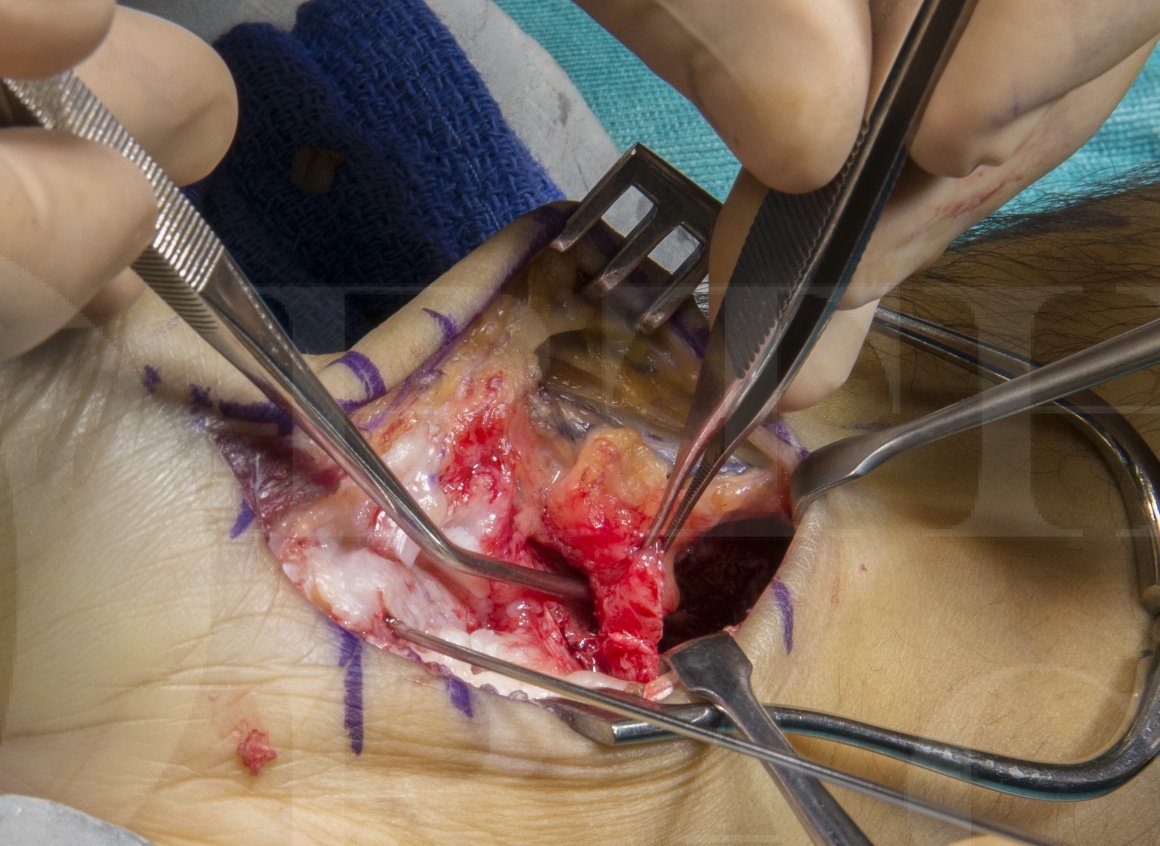Scaphoid fracture: Vascularised graft based on the volar carpal artery for non-union
Overview

Subscribe to get full access to this operation and the extensive Upper Limb & Hand Surgery Atlas.
Watch the overview
Learn the Scaphoid fracture: Vascularised graft based on the volar carpal artery for non-union surgical technique with step by step instructions on OrthOracle. Our e-learning platform contains high resolution images and a certified CME of the Scaphoid fracture: Vascularised graft based on the volar carpal artery for non-union surgical procedure.
Approximately 10% of scaphoid fractures will proceed to a non-union. The incidence is higher for fractures involving the proximal pole (up to 90%) and also is increased if there is a delay to diagnosis, inadequate immobilisation or significant displacement of the fracture.
There are two anatomical factors in particular that predispose the scaphoid to non-union. The first is that it is almost entirely intra-articular with limited soft tissue attachment for vascular inflow. With respect to the proximal pole it is served by an intra-medullary vessel that enters the dorsal distal waist which makes proximal pole fractures particularly prone to non-union due disruption of this vessel. The second that the scaphoid has no periosteum and so requires primary bone healing. Furthermore the scaphoids shape and articulations makes it difficult to immobilise. Fractures across its waist having a tendency to displace into a flexed position.
Scaphoid non-union represents a difficult surgical problem. Although some authors report satisfactory union rates following standard bone grafting techniques, others report failure rates as high as 65%.
A variety of techniques have been described to treat scaphoid non-union but the use of a vascularised rather than a non-vascularised graft has been shown to improve overall union rates especially where there is doubt about the vascularity of the proximal pole. One RCT directly comparing union rates in proximal pole non-union demonstrated an 89% union rate using vascularised bone graft compared to 72% with non-vascularised graft.
Various vascularised bone graft techniques are described in the literature. These include a dorsal distal radius bone graft raised upon the 1/2 inter-compartmental supraretinacular artery found between the 1st and second dorsal extensor compartments first described by Zaidemburg in 1988.
Another technique described is the use of a free vascularised bone graft taken from the medial femoral condyle. A summary of the techniques available is listed in the references at the end.
In this case a vascularised graft from the volar aspect of the distal radius is was used to fix a scaphoid non-union using a volar approach.
The mini Acutrak headless screw system is used in this case. It offers a tapered, fully threaded designed with a variable pitch and thus offers compression and sits beneath the bone surface.
The history, presentation, imaging and surgical decision making are described in the next section.
Readers will also find of use the following OrthOracle techniques:
Scaphoid fracture: Arthroscopic assisted grafting of non-union and fixation using Acutrak screw
Author: Tahseen Chaudhry ,Consultant hand and peripheral nerve surgeon
Institution: University Hospital Birmingham, Birmingham, UK.
Clinicians should seek clarification on whether any implant demonstrated is licensed for use in their own country.
In the USA contact: fda.gov
In the UK contact: gov.uk
In the EU contact: ema.europa.eu
Online learning is only available to subscribers.



















